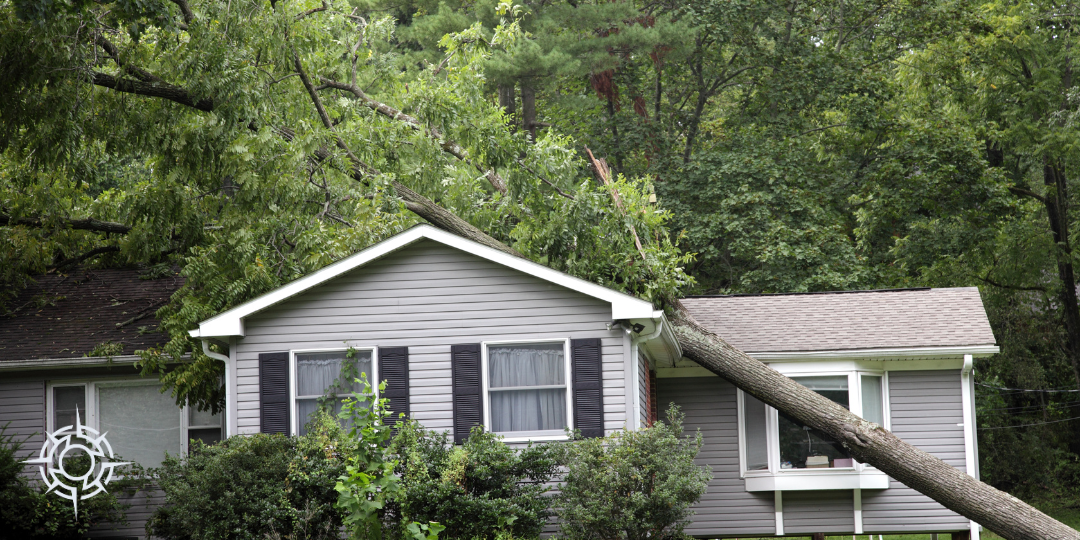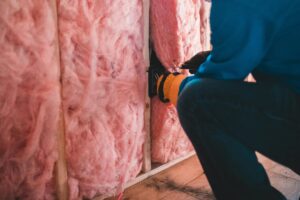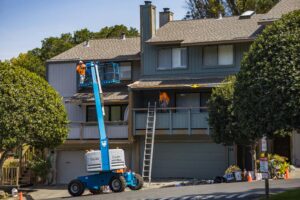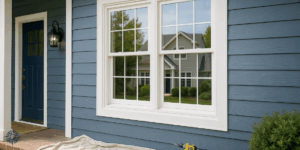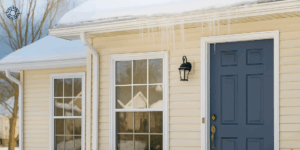What Happens When a Tree Falls?
When a tree falls on your property, the first question you ask is “Does Insurance Cover Fallen Tree Damage?” The damage can range from a few scattered branches to major structural issues—and the first question most homeowners ask is, “Does homeowners insurance cover tree damage?”
In most cases, yes, home insurance does cover damage from fallen trees—but only when the fall results from a covered peril such as high winds, lightning, snow, or ice. If the tree was already dead or diseased and fell due to neglect, insurance may not apply.
If you suspect that your roof may be damaged, here’s an article on how to spot and fix minor roofing problems.
⚠️ Disclaimer: This article is intended for general educational purposes. Always check the exact terms and coverage limits of your policy or speak with your insurance provider for details. Coverage can vary based on location, provider, and the specifics of your policy.
Where to Find Your Insurance Policy’s Tree Damage Coverage
To determine whether your home insurance covers tree damage, you’ll want to review your policy closely. Look for the section titled “Perils Insured Against” or “Coverage A – Dwelling.” These sections outline what types of incidents are covered and under what conditions.
In the search for tree-related information, look for keywords like:
- “Falling objects”
- “Windstorm”
- “Ice or snow”
- “Debris removal”
- “Tree damage”
- “Exclusions”
If you’re unsure how to interpret the language, consider calling your insurance agent. It’s always better to clarify in advance than to find out you’re underinsured after a storm. You can also ask about your deductible and maximum coverage limits for storm damage tree removal and structural repairs.
Does Insurance Cover My Roof if a Tree Falls?
Yes, in most cases, homeowners insurance covers roof damage from a fallen tree—as long as the fall resulted from a covered peril such as wind, lightning, or snow accumulation. According to Bankrate, most standard policies will help pay for the cost of roof repair or replacement due to this type of event.
However, the source of the damage is important. If the tree was clearly diseased or rotting and should have been removed before the storm, your claim might be denied. Insurers often send out adjusters to determine the condition of the tree before it fell.
So yes, your policy likely covers the cost of repairing your roof, but it won’t cover pre-existing negligence. Keep an eye on your trees to avoid this scenario altogether.
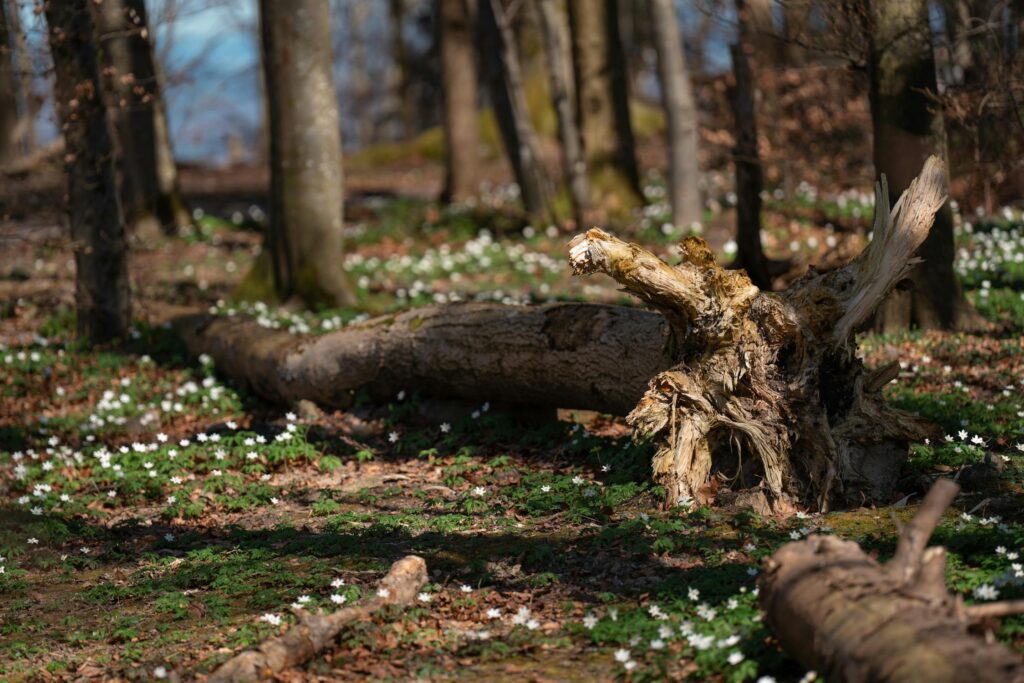
What if a Fallen Tree Doesn’t Damage My Home?
This is where many homeowners are caught off guard. If a tree falls on your property but doesn’t cause damage to your home, garage, fence, or other covered structures, your insurance typically won’t cover tree or debris removal.
As outlined by Allstate, insurance coverage is tied to property damage—not just the inconvenience of a fallen tree.
There are exceptions. Some policies will cover removal if the fallen tree is blocking a driveway or handicapped-accessible ramp, even if it hasn’t caused direct structural damage. Again, it depends on the specific language in your policy.
To avoid surprises, make sure you understand what your insurer defines as “damage” and whether your plan includes tree removal as part of post-storm cleanup.
Does Homeowners Insurance Cover Tree Damage to a Neighbor’s Property?
If your tree falls and damages your neighbor’s home, fence, or car, your neighbor’s homeowners insurance usually covers the cost of repairs—if the fall was due to a natural event, such as a windstorm or heavy snow.
However, if the tree was neglected, diseased, or clearly at risk and you failed to act, you could be held liable. In that case, your liability coverage might come into play—if it’s included in your policy.
This situation can get complicated quickly. If your neighbor believes you were negligent, they may file a claim with their insurer and pursue legal action for reimbursement. That’s why it’s important to regularly inspect your trees and remove any that appear to be unhealthy or unstable.
So, does homeowners insurance cover tree damage to neighbor’s property? Usually, yes—but only when nature is to blame, not negligence.
Does Insurance Cover Tree and Debris Removal?
If a tree damages a covered structure—like your house, garage, shed, or fence—most insurance policies also help pay for tree and debris removal. This includes cutting up the tree, hauling it away, and disposing of it properly.
The removal allowance is often capped. Some policies provide up to $500–$1,000 per tree, with a total limit (e.g., $1,500 per event). Be sure to review your Coverage D (Additional Coverages) section or search for “debris removal” in your policy documents.
Keep in mind: insurance will only pay for debris removal related to covered damage. If the tree doesn’t hit anything important (like in Section 4), the cleanup is usually your responsibility.
Does Homeowners Insurance Cover Tree Removal Before a Fall?
No—homeowners insurance does not cover preventative removal of trees that are old, dead, or diseased. It’s considered the homeowner’s responsibility to keep trees trimmed and to remove hazardous ones before they fall.
If you notice:
- Cracking bark
- Large dead branches
- Fungal growth
- Leaning trunks
…it’s time to call a certified arborist. Waiting until a storm brings the tree down might leave you uninsured for the damage it causes.
This is also important for storm damage tree removal scenarios—if the tree was previously marked for removal or was clearly unsafe, insurance may decline the claim based on lack of maintenance.

How Much Does Insurance Cover for Tree Damage to a Home?
The amount of coverage for tree-related damage depends on the limits you’ve set in your policy. According to Allstate, your insurer may pay for repairs to your home up to the amount listed in Coverage A (Dwelling) or Coverage B (Other Structures).
If your policy limit is $250,000 for the dwelling, and the damage to your roof is $12,000, your insurer may approve the full amount—minus your deductible.
Always check:
- Dwelling limits
- Deductible amount
- Debris removal caps
For comprehensive protection, consider adding endorsements or riders for extra debris removal or structure coverage, especially if your home is surrounded by large trees.
Do Trees Add Value to My Home?
While trees can be risky during storms, they also add real estate value. Studies suggest that mature trees can increase property value by 3–15%, depending on their location, species, and condition.
The key is balance. Keep your healthy trees and enjoy the shade, privacy, and beauty they offer—but monitor them regularly. If a tree stops sprouting leaves, leans heavily, or shows signs of disease, it may be time to consult a tree professional.
A little proactive care can go a long way in preventing future claims and protecting the health of your property.
Compass Exteriors: Your Partner in Insurance-Backed Repairs
When a tree damages your roof or exterior, time is of the essence—and so is experience. At Compass Exteriors, we’ve worked closely with insurance providers across Minnesota to help homeowners repair storm-damaged homes efficiently whether it is a simple roofing repair, or a complete exterior renovation.
We handle everything from documentation to repair, and we’re experts in navigating the claims process. Whether it’s a full roof replacement or partial siding repair, we’ll ensure your home is restored
Contact Compass Exteriors today to schedule a storm damage inspection or to get help with your insurance-backed exterior project.

